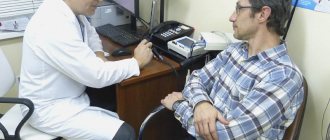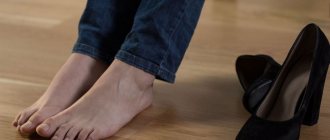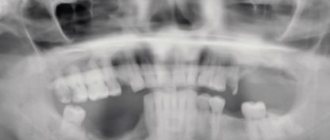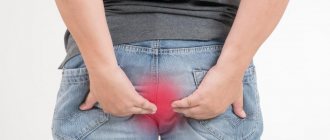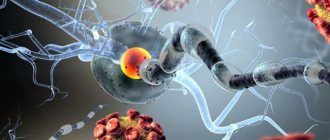General information
A characteristic feature of the disease is metabolic disorders in skeletal muscle tissue. The muscles of a sick child lose their function partially or entirely, that is, weakness appears in them and the range of movements decreases. The quality of life is significantly reduced. Source: Komantsev V.N., Skripchenko N.V., Sosina E.S., Klimkin A.V. POLYNEUROPATHY AND MYOPATHY OF CRITICAL CONDITIONS IN ADULTS AND CHILDREN: DIAGNOSIS, CLINICAL MANIFESTATIONS, PROGNOSIS, TREATMENT // Modern problems of science and education. – 2012. – No. 5
This pathology usually has a hereditary form and can be diagnosed in children of any age. It is not life-threatening, except in cases where atrophy of the heart muscle and respiratory muscles occurs. Source: https://www.ncbi.nlm.nih.gov/pmc/articles/PMC2796972/ Chris M. Jay, Nick Levonyak, Gregory Nemunaitis, Phillip B. Maples and John Nemunaitis Hereditary Inclusion Body Myopathy (HIBM2) Gene Regul Syst Bio. 2009; 3: 181–190.
The disease has a number of complications:
- development of respiratory failure;
- limited mobility;
- paralysis;
- congestive pneumonia;
- depressive, suicidal mood of the patient;
- increased risk of death.
Myopathy - what is the diagnosis?
13.03.2020
Myopathy is not one specific disease, but a whole group of diseases with the same symptoms and approximately the same course, but completely different in origin.
How does it manifest?
Myopathy is muscle dystrophy, that is, they are destroyed for one reason or another, but are not restored in the required volumes or quality. It is clear that this is a general weakening of the muscles. It can apply to all muscles without exception, or to specific groups. Later, the disease affects them all to one degree or another. It is no longer suitable as a propulsion device.
At first, it simply becomes more difficult to walk at a fast pace and, even more so, to run. Long distances have to be broken up into pieces and stops made to rest. If something like this appears, it’s time to worry and see a neurologist . The sooner treatment begins, the better.
Then the muscle fibers begin to disintegrate, this is actually dystrophy. At this stage, it becomes outwardly noticeable that there are serious problems:
- one muscle group, for example, the calves, looks too large relative to the thighs;
- then a characteristic deflection appears in the lumbar , called lordosis;
- the gait turns into a “duck”;
- shoulder blades stick out;
- the stomach protrudes forward;
- shoulders go down.
Full set. The disease is in full swing. All that remains is to devote all our efforts to stopping the speed of its flow.
So what, nothing can be done?
Something is possible. First, you need to determine exactly what myopathy , since there are congenital (primary) forms and nothing can be done about it, but there are acquired (secondary) forms, the onset of which is toxins, infections, endocrine system , severe chronic diseases, COPD , tumors. Secondaries can be dealt with quite successfully, especially if you do not start the process.
The time of onset of the disease is also of great importance. The later in age myopathy begins to manifest itself, the greater the chances of living a long and happy life filled with all the delights. Infantile myopathies leave virtually no chance of this.
How to treat?
Primary myopathy , at the moment, cannot be treated anywhere, in any way. It is a fact. Medicine does not yet know how to change genes in the body of an already formed person, but this does not mean at all that you need to come to terms with the presence of myopathy . Not at all. Maintenance therapy can slow down its development and not only improve the patient’s quality of life, but also prolong this very life. The following drugs are used in treatment:
- steroid hormones ;
- inhibitory breakdown of enzymes that transmit signals along nerves ;
- neurotransmitters;
- vitamin complexes.
Treatment of secondary myopathy is much more effective, since the accompanying sore, which became the “trigger” of myopathy . The correct selection of medications and other procedures gradually eliminates symptoms and myopathies .
Other procedures include physiotherapy , physical therapy , massage , and breathing exercises.
How to live with this?
Even if the diagnosis relates to primary myopathies, you should not despair, you just need to accept it and start acting. Many people rely entirely on medications, but they will not make their muscles strong, but gymnastics can. The truth is, you shouldn’t rush from one extreme to another. Everything should be in moderation, until the first feeling of fatigue. It is better to take a break and repeat the exercise 2-3 times. Almost no one pays attention to breathing exercises at all, but in vain. Muscles also breathe, they simply need oxygen! A massage is required, but also moderate, to remove excess tone after training and invigorate them between them.
Relatives and friends of a person suffering from myopathy should under no circumstances descend to the level of tearful crying and lamentation “why are you being punished like that?” It’s already difficult for a person, there’s no need to make it worse. On the contrary, only a positive attitude and support.
If the disease began in adolescence or older age, then you should pay attention to the choice of profession. It is better to give preference to one that, in an unfavorable situation, will be able to feed a person with myopathy at home. Technology makes it possible to work remotely in many specialties. The main thing is to become a great specialist so that the employer has no doubts when choosing a candidate.
Published in Neurology Premium Clinic
Causes of myopathy in children:
- hormonal imbalances;
- heredity;
- genetic defects (deficiency of an enzyme that ensures metabolic processes in muscles; a defect in a cell that plays the most important role in the delivery of energy material to the muscles); Source: https://www.ncbi.nlm.nih.gov/pmc/articles/PMC5575512/ Alessia Nasca, Chiara Scotton, Irina Zaharieva, Marcella Neri, Rita Selvatici, Olafur Thor Magnusson, Aniko Gal, David Weaver, Rachele Rossi, Annarita Armaroli, Marika Pane, Rahul Phadke, Anna Sarkozy, Francesco Muntoni, Imelda Hughes, Antonella Cecconi, György Hajnóczky, Alice Donati, Eugenio Mercuri, Massimo Zeviani Recessive mutations in MSTO1 cause mitochondrial dynamics impairment, leading to myopathy and ataxia Hum Mutat. 2021 Aug; 38(8): 970–977.
- systemic connective tissue lesions.
2. Reasons
There are congenital (primary) and acquired myopathies.
Primary are caused by an inherited genetic defect, or the first genetic mutation of this kind in the family.
The essence of the defect is the incorrect coding of proteins that make up muscle tissue (cell membranes, in particular).
This leads to disturbances in the metabolism of such proteins, which entails a “chain reaction” of metabolic failures in the neuromuscular organization, gradual degeneration, dystrophy and atrophy of muscle tissue, which is manifested by a characteristic clinical picture (see below).
Secondary myopathies develop as a result of or against the background of systemic collagenosis (connective tissue diseases), inflammatory processes, endocrine disorders (for example, thyroid pathology), damage to neural tissue, and certain intoxications.
Visit our Neurology page
Symptoms and treatment of pathology in a child
Clinical signs of myopathy in children:
- change in gait;
- weakness that does not go away with rest;
- delayed motor development;
- flaccid, flabby muscles;
- atrophy (thinning) of muscles;
- curvature of the spine is a manifestation indicating weakness of the muscular corset.
Negative processes manifest themselves in children in early and teenage years, but since myopathy develops slowly, it can go undetected for a long time. In addition, children are able to compensate for muscle deficiency by using other, healthy muscles more actively.
The most common changes are observed in the areas of the shoulders, legs, arms, pelvis, and chest. With this disease they are always bilateral and symmetrical.
As the disease progresses, movement disorders appear:
- it is difficult for a child to sit up from a lying position;
- movements are abnormal, “wrong”;
- when walking and/or running, fatigue quickly sets in;
- the child has difficulty maintaining balance and often falls;
- It is difficult for a child to climb stairs.
Disturbances in appearance may also appear:
- protruding ribs;
- very thin, as if overtightened, waist;
- flattened chest;
- slouch;
- Irregular shape of legs - thick calves and thin thighs.
Prognosis and prevention
Since mitochondrial myopathies are still incurable diseases, the prognosis is unfavorable. It is possible to improve the quality of life of patients with the help of comprehensive rehabilitation, however, with a detailed clinical picture, death often occurs in childhood or young age. For prevention, married couples with a family history need medical and genetic counseling when planning pregnancy.
You can share your medical history, what helped you in the treatment of mitochondrial myopathy.
Diagnosis of myopathy
The disease is expressed:
- increasing symptoms;
- absence of seizures and neurological manifestations;
- selective localization;
- characteristic "duck" gait.
For an accurate diagnosis, first of all, an anamnesis is collected to find out whether there have been cases of this disease in the family. Then an examination is carried out by a neurologist, during which the doctor evaluates muscle tone, the spread of weakness, the presence of muscle thinning, the degree of body deformation, the severity of reflexes, gait, and asks the child to sit up from a lying position and stand up from a sitting position.
Laboratory diagnostics include:
- clinical blood test;
- muscle biopsy;
- checking thyroid hormone levels.
A genetic examination of the child and close relatives is also carried out. Source: https://www.mda.org/disease/congenital-myopathies/diagnosis The Muscular Dystrophy Association (MDA).
Classification of myopathies
To date, there is no single classification of myopathies; these diseases are divided according to several principles. The first work in this direction was the so-called clinical classification of neuromuscular diseases, which at that time were considered diseases exclusively of muscle tissue. According to this system, doctors identified such types of myopathies as limb-girdle, facioscapulohumeral, humero-tibial and others.
This division could be considered conditional, since it did not have clear characteristics, just like today. There is no more precise classification of myopathies and neuromuscular diseases in medicine, so the existing system is still used.
A pathogenetic classification is also known, the emergence of which is associated with the emergence of new knowledge about myopathy. For example, it became known that myodystrophies can manifest themselves due to multiple nerve damage, which can provoke metabolic disorders and toxic effects. Thus, myopathies began to be divided into neural amyotrophies, primary muscle diseases, etc.
With the development of medicine, pathogenetic classification is becoming more and more detailed, which is based on knowledge of the protein affected by the disease. According to this classification, the types of myopathy are calpainopathy, titinopathy, etc. Identification of a defective protein allows us to draw conclusions about the nature of its mutation.
Myopathy can be divided into hereditary and acquired types. The history of hereditary types sometimes contains relatively clear data on the presence of this disease in relatives. Examples of hereditary myopathies are dystrophic myopathies such as Duchenne myopathy, mitochondrial diseases, and storage diseases, the most common of which is Pompe disease.
Different types of myopathies have different pathogenesis, which directly depends on which gene is affected in a particular case. Thus, dystrophic myopathies or myodystrophies are a consequence of a process in which the synthesis of structural proteins of myofibrils is disrupted. Storage diseases are the result of a decrease in the amount of enzymes produced and a decrease in their activity. In this case, sooner or later the patient begins to worry about muscle weakness and muscle atrophy, which are key signs of myopathy.
Types of disease
One of the classification features is the cause of the disease . According to it, myopathy is distinguished:
- primary (appears independently at birth, in early childhood or adolescence);
- secondary (develops against the background of other diseases).
According to the location of weakness, the disease is:
- proximal (muscles are weakened closer to the body);
- distal (muscles are weakened in the limbs further from the body);
- mixed.
The following forms of the disease also exist :
- Pseudohypertrophic (Duchenne-Griesinger). Appears at 3-6 years of age, rarely before one year. Mainly affects the muscles of the legs and pelvis. Associated lesions: weakness of the respiratory and cardiac muscles. There is a high probability of death even before adulthood.
- Landouzy-Dejerine. Begins at 10-15 years of age and affects the face. The facial muscles weaken, the lips protrude and thicken, and often the patient cannot close his eyelids. Then the muscles are involved in a descending manner down to the shoulder girdle.
- Erba-Rotta (youth). The onset of the disease is 10-20 years, boys are mainly susceptible to this form. The processes take place from top to bottom or bottom to top, rarely throughout the entire body or in the face area.
Important!
Congenital myopathy is one of the most dangerous forms in children, often resulting in death. Her treatment is limited to improving vitality and begins in the first months after birth. The main thing in therapy is the prevention of respiratory failure, the organization of tube feeding. As the child grows, orthopedic correction techniques are used, physiotherapy and social adaptation are of great importance.
Etiology and pathogenesis of myopathies
The development of myopathy is most often due to hereditary causes. The genetic types of this disease have different forms, which are characterized by certain types of inheritance. An important role in the etiology of myopathies is played by acute and chronic infections, injuries and injuries, nutritional dystrophies and other unfavorable environmental factors. Experts also point to overexertion, which can cause the development of myopathy in people predisposed to it due to heredity.
Thus, almost any unfavorable factor in human life can become an impetus for the manifestation and development of myopathies. The nature of the predisposition of some patients to the development of myopathies was made possible by biochemical and genetic studies. It is known for sure that patients have metabolic defects caused by heredity. They provoke dysfunction of certain enzymes, which causes a lack of aldolase, transaminase, creatine phosphokinase and other vital substances in the blood serum.
In the pathogenesis of myopathies, in addition to genetic metabolic abnormalities of varying degrees, a violation of the sympathetic innervation of muscles has been identified. The lesion affects mainly the proximal arms and legs, where it is richer than in other areas. The central autonomic apparatus of the diencephalic level also suffers from myopathies. This is manifested by a violation of some centrally conditioned autonomic reflexes.
Treatment methods
Important!
The sooner you start treating a child, the greater his chances of a fairly high quality of life.
Treatment boils down to the following activities:
- injection of adenosine triphosphoric acid (ATP) in courses;
- iontophoresis;
- vitaminization;
- drugs to improve blood circulation;
- massage;
- use of orthopedic correction devices by patients;
- the use of drugs for better neuromuscular conduction;
- hormone therapy;
- and etc.
The hereditary form of the disease cannot be completely cured, but it is possible to specifically eliminate the main symptoms by:
- orthopedic correction;
- regular and breathing exercises.
Sometimes surgery is required. It is aimed at correcting scoliosis that occurs against the background of the underlying disease.
Promising methods for treating myopathy are: the use of stem cells and gene therapy.
4.Treatment
There is currently no etiotropic treatment for diseases of the myopathic group, and the most justified hopes in this regard are associated with developments in the field of genetic engineering and cell therapy. The main strategy currently is palliative treatment with the use, depending on specific indications and contraindications, of physiotherapy, replacement therapy, special vitamin complexes, and hormonal agents.
From a certain point, patients need social support (disability), care, and special equipment (strollers, orthoses, etc.). In most cases, with proper supervision, it is possible to prolong the patient’s life as much as possible and maintain an acceptable quality of life for a long time.
Advantages of contacting SM-Clinic
Our clinic employs some of the best pediatric neurologists in St. Petersburg, doctors of high categories with impressive experience. Your child will be able to undergo diagnostics using modern equipment, undergo laboratory tests without queues and in comfortable conditions. SM-Clinic specialists will develop an optimal treatment plan in a short time, taking into account the individual characteristics of the patient and the form of his disease.
Call us for additional questions and to schedule an appointment.
Sources:
- Komantsev V.N., Skripchenko N.V., Sosina E.S., Klimkin A.V. Polyneuropathy and myopathy of critical conditions in adults and children: diagnosis, clinical manifestations, prognosis, treatment // Modern problems of science and education, 2012, No. 5.
- https://www.ncbi.nlm.nih.gov/pmc/articles/PMC2796972/ Chris M. Jay, Nick Levonyak, Gregory Nemunaitis, Phillip B. Maples and John Nemunaitis Hereditary Inclusion Body Myopathy (HIBM2) Gene Regul Syst Bio. 2009; 3: 181–190.
- https://www.ncbi.nlm.nih.gov/pmc/articles/PMC5575512/ Alessia Nasca, Chiara Scotton, Irina Zaharieva, Marcella Neri, Rita Selvatici, Olafur Thor Magnusson, Aniko Gal, David Weaver, Rachele Rossi, Annarita Armaroli , Marika Pane, Rahul Phadke, Anna Sarkozy, Francesco Muntoni, Imelda Hughes, Antonella Cecconi, György Hajnóczky, Alice Donati, Eugenio Mercuri, Massimo Zeviani
- Recessive mutations in MSTO1 cause mitochondrial dynamics impairment, leading to myopathy and ataxia Hum Mutat. 2021 Aug; 38(8): 970–977.
- https://www.mda.org/disease/congenital-myopathies/diagnosis The Muscular Dystrophy Association (MDA).
Pitsukha Svetlana Anatolyevna Clinic
Author of the article
Pitsukha Svetlana Anatolevna
Doctor of the highest qualification category
Specialty: neurologist
Experience: 24 years
The information in this article is provided for reference purposes and does not replace advice from a qualified professional. Don't self-medicate! At the first signs of illness, you should consult a doctor.
Prices
| Name of service (price list incomplete) | Price |
| Appointment (examination, consultation) with a neurologist, primary, therapeutic and diagnostic, outpatient | 1750 rub. |
| Consultation (interpretation) with analyzes from third parties | 2250 rub. |
| Prescription of treatment regimen (for up to 1 month) | 1800 rub. |
| Prescription of treatment regimen (for a period of 1 month) | 2700 rub. |
| Consultation with a candidate of medical sciences | 2500 rub. |
| Transcranial duplex scanning (TCDS) of cerebral vessels | 3600 rub. |



